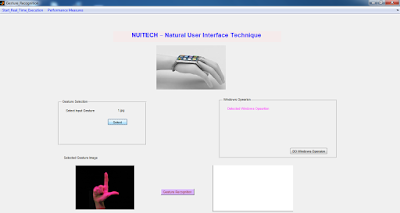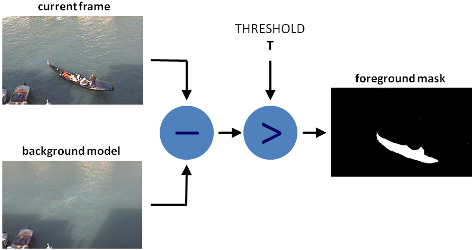Hand Gesture Recognition in MATLAB
Gesture recognition is a topic in computer science and language technology with the goal of interpreting human gestures via mathematical algorithms. Gestures can originate from any bodily motion or state but commonly originate from the face or hand. Current focuses in the field include emotion recognition from face and hand gesture recognition. Many approaches have been made using cameras and computer vision algorithms to interpret sign language. However, the identification and recognition of posture, gait, proxemics, and human behaviors is also the subject of gesture recognition techniques.Gesture recognition can be seen as a way for computers to begin to understand human body language, thus building a richer bridge between machines and humans than primitive text user interfaces or even GUIs (graphical user interfaces), which still limit the majority of input to keyboard and mouse.
Sample Implementation:
Depending on the type of the input data, the approach for interpreting a gesture could be done in different ways. However, most of the techniques rely on key pointers represented in a 3D coordinate system. Based on the relative motion of these, the gesture can be detected with a high accuracy, depending on the quality of the input and the algorithm’s approach.


Gesture recognition is a topic in computer science and language technology with the goal of interpreting human gestures via mathematical algorithms. Gestures can originate from any bodily motion or state but commonly originate from the face or hand. Current focuses in the field include emotion recognition from face and hand gesture recognition. Many approaches have been made using cameras and computer vision algorithms to interpret sign language. However, the identification and recognition of posture, gait, proxemics, and human behaviors is also the subject of gesture recognition techniques.Gesture recognition can be seen as a way for computers to begin to understand human body language, thus building a richer bridge between machines and humans than primitive text user interfaces or even GUIs (graphical user interfaces), which still limit the majority of input to keyboard and mouse.
Sample Implementation:
Depending on the type of the input data, the approach for interpreting a gesture could be done in different ways. However, most of the techniques rely on key pointers represented in a 3D coordinate system. Based on the relative motion of these, the gesture can be detected with a high accuracy, depending on the quality of the input and the algorithm’s approach.


Mail to onlinematlabprojects@gmail.com to get MATLAB PROJECTS

























